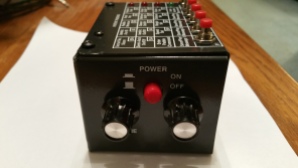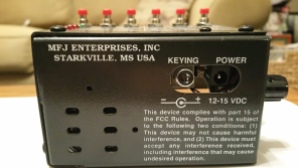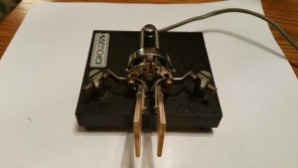WT8WV “Colossus” Air Cannon Antenna Launcher

These are the basic parts to make my “WT8WV Colossus” antenna launcher.
Folks, this has been a fun and hilarious winter project. Yesterday, when I built this air cannon antenna launcher it was -4 degrees outside and this was a perfect evening project to put together. For years, me and my two ham radio buddies (WR8S Bill Shultz and WV8TG Tom Graf), have enjoyed ARRL Field Day activities and usually used a slingshot and a 3/4 ounce fishing sinker weight and an old Zebco fishing reel (with 20 pound test line) to shoot and suspend our doublet dipole antennas high into the trees. Certainly, the slingshot worked pretty much flawlessly… but… boys will be boys, and the idea of an air cannon / spud launcher / potato gun type system seemed to be a new desire. (Most people, our wives included, wouldn’t trust our 3-man team with a slingshot, let alone a potato gun! But I digress.) Actually, our local ham radio club (Monongalia Wireless Association) had a version of a potato gun antenna launcher, so we decided we needed one of our own… and to make some design modifications in the interest of… “science”… plus our own sadistic pleasures. (Make sure you read below WV8TG’s initial “pressure test” experience.) The following pictures hopefully provide the basic concept and parts we used. Tom and I split the cost of the parts needed to make launchers and each built our own version, but they both are the same basic design with only length dimensions of the air chamber and barrel being the difference.
All parts where sourced from our local Lowes store in their plumbing department, except the Schrader valve which can be purchased at an automotive store. Total cost about $40 but you could make a couple of them as a joint project with a friend and reduce that cost per launcher a bit. I got a small rubber gasket for the outside nipple of the Schrade valve to act as another seal on the exterior of the air chamber. You will need to drill holes for Schrader valve, barrel slug stop and projectile slug caps to attach the screw eyes to attach the fishing line. I used 3 inch PVC for air chamber, 1.25 inch PVC for the barrel and short sections to mate the air chamber, trigger valve and threaded barrel. The projectile slugs were made from 3/4 inch PVC and caps and I filed off the nubs on the caps with a Dremel tool for a smooth fit into the barrel. I used PVC Prep on each joint before applying the glue. When gluing joints together, insert the sections together and twist a quarter turn for a solid adhesion. Let all glue set up for 24 hours before testing air pressure chamber. I will pressurize the chamber inside and let it sit overnight to see if it loses any pressure. It’s too cold right now to take outside in -4 degree temperatures to test, but I will use a bicycle pump with a pressure reading valve, and start at 40 psi… then 50 psi… and then 60 psi for test shots to see how it functions and check for any air pressure leaks. We use 60 psi for our club launcher.
WV8TG (Tom) charged his air chamber (barrel not attached) and let it set overnight to test for chamber air leakage. When he opened the trigger value… there was NO leakage… but there was a sudden LOUD release of 60 psi air gush out of a 30 inch long, 3 inch wide fully charged air chamber. He indicated the compressed air release was… impressive. However, his wife was not impressed… nor was she aware of the scientific test that was taking place. #surprise! #WHOOOOOOOSH #loudwifeexpressions I have no reason to doubt Tom will find his projectile slugs in the next county using his design. The club chamber was 12 inches long versus his 30 inch air chamber. #overkill? I designed my air chamber for 14 inches and will conduct all tests… outside. #potentialmeanwife
Bencher Paddles and Memory Keyer UNITE!
As soon as I get my Yaesu System Fusion FTM100-DR online, I want to mate my Bencher paddles to the new MFJ-490X Menu Driven Memory Keyer that I picked up at the 2016 Dayton Hamvention last week (May 21, 2016). I am itching to get these two toys working in some CW / More Code Contesting very soon! 5 programmable memories plus all sorts of keyer speed, weighting, side tone, hand key capability, serial number decrements, random code practice, iambic settings, etc.
(See video below!)
MFJ-490X Memory Keyer Instruction Manual
APRS… from the inventor, Bob Bruninga WB4APR
I would venture to say you can’t do better than hearing it from the inventor himself!
Automatic Packet Reporting System overview by its inventor, Bob WB4APR given at the HACDC Amateur Radio Club. For more information about APRS, go to http://www.aprs.org For more information about HACDC Amateur Radio Club go to http://www.w3hac.org
How Does a Crystal Radio Set Actually Work?
Here is an excellent YouTube video from RimstarOrg that breaks down the concept of how crystal radios actually DO their magic! Yes, MAGIC. Radio signals are all around us 24 hours a day. Invisible! You can’t really touch them. You can’t smell them. You can’t hear them without assistance. We don’t really feel them bombarding us. We don’t sense those signals without some mechanical help… but they strike us with many different frequencies constantly… so let’s explore the range of frequencies we can decipher with a homemade crystal radio set!
Famous Ham Radio Operators and their Callsigns

I love learning who shared our favorite hobby… and the list is very long! It was so interesting to see not only WHO they were but also WHAT they did to be famous. Literally from every corner of the globe (try and find a corner on a globe).

I found this on the DX-QSL website and somehow the Bedworth Lions Club apparently had something to do with the creation of the list. I am quite fond of the good work The Lions do and I belong to a couple fraternal organizations (Masonic Lodge and Woodmen of the World) myself, so I am sure there is a story about The Lions being connected to this list. The list is long, so grab a refreshment and enjoy! Be prepared to be surprised!
Click the link below…
World Famous Ham Radio Operators
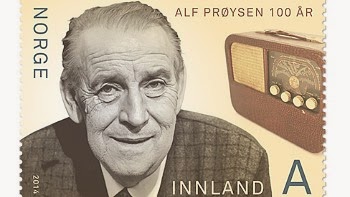
Amateur Radio, Radar, Lidar & Radio on Postage Stamps

I love collecting stamps and vintage baseball cards and have quite a collection of both… but I have NEVER seen this many RADIO STAMPS in one setting! Kirt Blattenberger, KB3UON, has a really cool website with lots of neat things to read. This caught my eyes INSTANTLY. Thank you, Kirt! His quote and stamp array begins below.
************ ************ *********** ********** ***********
Over the past many decades, my involvement in stamp collecting (philately) has waned and ebbed with the amount of time available to dedicate to it. Commemorative stamps – from all countries – have always been of the greatest interest to me. Even if you are not a philatelist, your interest in radio should be piqued by the large number of postage stamps that have been issued in radio’s honor. Although I do not own most of the stamps pictured here, there are some that are in my collection. This is a small cross-section of what is available. Over time, I have added to the list and will continue to do so. Please let me know if you have relevant stamps to add.
I was amazed to discover how many countries have postage stamps recognizing the important role that weather radar has played in history.
Note: Many of these images are uncredited because although I might have retrieved them from a particular website, they appear to be replicated in many places. Therefore, the true origin is not known. My policy is to always provide attribution as part of the “Fair Use” law when the source is certain. I will be glad to link back to the owner’s website if evidence of ownership is provided.
| Amateur Radio Postage Stamps | ||||
 Amateur Radio USA Postage Stamp |
 Amateur Radio Luxembourg Postage Stamp |
 Amateur Radio China Postage Stamp |
 Amateur Radio Germany Postage Stamp |
 Amateur Radio Bosnia Postage Stamp |
 Amateur Radio Japan Postage Stamp |
 Amateur Radio Canada Postage Stamp |
 Amateur Radio Viet Nam Postage Stamp |
 Amateur Radio Bulgaria Postage Stamp |
 Amateur Radio Bhutan Postage Stamp |
 Amateur Radio Bulgaria Postage Stamp |
 Amateur Radio Zazzle Postage Stamp |
 Amateur Radio Russia Postage Stamp |
 Amateur Radio Zazzle Postage Stamp |
 Amateur Radio Poland Postage Stamp |
 Amateur Radio Qatar Postage Stamp |
 Amateur Radio Tuvalu Postage Stamp |
 Amateur Radio Slovania Postage Stamp |
 Amateur Radio Austria Postage Stamp |
 Amateur Radio Sweden Postage Stamp |
| Radio Postage Stamps | ||||
 Radio USA Postage Stamp |
 Radio USA Postage Stamp |
 Radio USA Postage Stamp |
 Radio USA Postage Stamp |
 Radio USA Postage Stamp |
 Radio USA Postage Stamp |
 Radio East Germany Postage Stamp |
 Radio Slovenia Postage Stamp |
 Radio Russia Postage Stamp |
 Radio Canada Postage Stamp |
 Radio Germany Postage Stamp |
 Radio East Germany Postage Stamp |
 Radio Russia Postage Stamp |
 Radio Belgium Postage Stamp |
 Radio Russia Postage Stamp |
 Radio Pitcairn Island Postage Stamp |
 Radio Tuvalu Postage Stamp |
 Radio India Postage Stamp |
 Radio Moscow Postage Stamp |
 Radio Gremany Postage Stamp |
 Radio Republic of Transkei Postage Stamp |
 RadioRadio Republic of Transkei Postage Stamp |
 RadioRadio USSR Postage Stamp |
 Radio Monte Carlo Postage Stamp |
 RadioRadio Cuba Postage Stamp |
 RadioRadio Romania Postage Stamp |
||||
| Radar Postage Stamps | ||||
 Radar China Postage Stamp |
 Radar Antenna Barbados Postage Stamp |
 Sea Radar Solomon Islands Postage Stamp |
 Radar Altimeter Gilbert & Ellice Islands Postage Stamp |
 Meteor Tracking Radar Fiji Postage Stamp |
HF Radar France Postage Stamp |
||||
| Weather Radar Postage Stamps | ||||
 Weather Radar Jamaica Postage Stamp |
 Weather Radar Belize Postage Stamp |
 Weather Radar North Korea Postage Stamp |
 Weather Radar Iran Postage Stamp |
 Weather Radar Iran Postage Stamp |
 Weather Radar Senegal Postage Stamp |
 Weather Radar Philippines Postage Stamp |
 Weather Radar Qatar Postage Stamp |
 Weather Radar Libya Postage Stamp |
 Weather Radar Malagasy Postage Stamp |
 Weather Radar United Nations Postage Stamp |
 Weather Radar Viet Nam Postage Stamp |
 Weather Radar Taiwan Postage Stamp |
 Weather Radar Spain Postage Stamp |
 Weather Radar Central African Republic Postage Stamp |
 Weather Radar Belgium Postage Stamp |
 Weather Radar Afghanistan Postage Stamp |
 Weather Radar Austria Postage Stamp |
 Weather Radar Bahamas Postage Stamp |
 Weather Radar Bahamas Postage Stamp |
 Weather Radar Afghanistan Postage Stamp |
 Weather Radar Bangladesh Postage Stamp |
 Weather Radar Canadian Postage Stamp |
||
| Lidar Postage Stamps | ||||
 Lidar France Postage Stamp |
 Lidar Australia Postage Stamp |
|||
| Electricity Postage Stamps | ||||
 Electricity British Postage Stamp |
||||
| Also of interest are Radio Reception Stamps that were used by commercial radio stations to officiate reception of signals. These were not official Postage Stamps | ||||
 KDKA Pittsburgh, PA Radio Reception Stamp |
 KFUM Colorado Springs, CO Radio Reception Stamp |
 KFSO San Francisco, CA Radio Reception Stamp |
 KFQZ St. Louis, MO Radio Reception Stamp |
 WTIC Hartford, CT Radio Reception Stamp |
 CNRO Ottawa, Ontario Radio Reception Stamp |
 WDAF Kansas City, KS Radio Reception Stamp |
 WBEN Buffalo, NY Radio Reception Stamp |
 WGBF Evansville, IN Radio Reception Stamp |
 WSYR Syracuse, NY Radio Reception Stamp |
A more comprehensive list can be found on the Ground-Based Remote Sensing in Meteorology (Radar, lidar, sodar, etc.) website from Cooperative Institute for Research in the Atmosphere (CIRA) at Colorado State University.
This website has a few other communications Postage Stamps.
Yet another source is Joseph Morris‘ Flickr collection.
Multimeter Tutorial by AfroTechMods
THE BEST Multimeter Tutorial
The voltmeter… the Volt-Ohm Meter… the Multimeter… digital or analog… continuity… amperage, voltage and ohms… COME ON, MAN! What is it and how hard is it to use in the every day life of a ham radio enthusiast or just someone working in their workshop? Once again, Afrotechmods has an excellent tutorial on his YouTube channel for us to learn from!

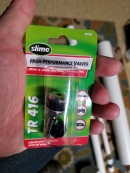








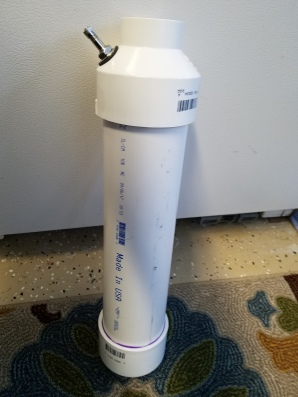











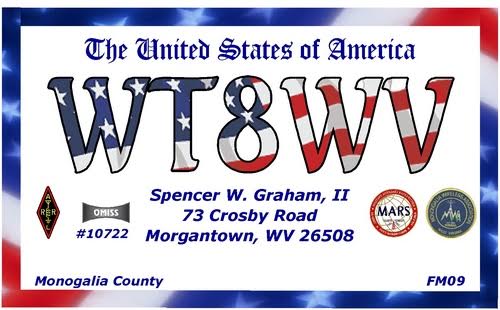
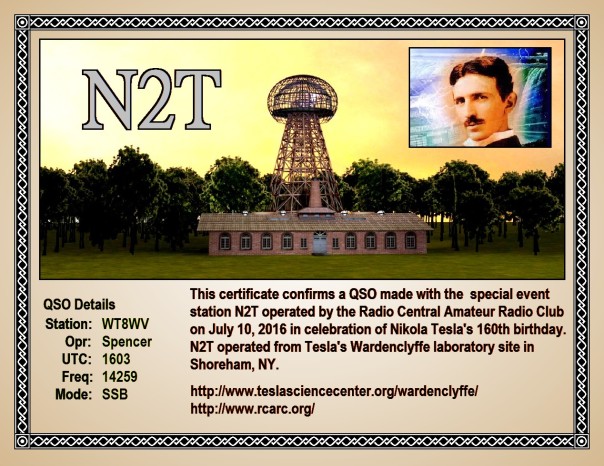


 I recently took a deeper dive into digital ham radio and picked up a Yaesu FTM-100 mobile System Fusion rig. VHF and UHF… 500 Channels on each band! Holy Crap, Batman… I’ll wear my aged, stubby, fat fingers to the nubs tryin’ to poke all that individual channel info into those 1,000 spots using those little buttons! Plus, I have to look up all that info… somewhere… on EVERY channel I want to add to my line-up. Ain’t no-body gotz time for dat! (I also had to do that with my Baofeng UV-5RV2+ portable HT a couple years ago.)
I recently took a deeper dive into digital ham radio and picked up a Yaesu FTM-100 mobile System Fusion rig. VHF and UHF… 500 Channels on each band! Holy Crap, Batman… I’ll wear my aged, stubby, fat fingers to the nubs tryin’ to poke all that individual channel info into those 1,000 spots using those little buttons! Plus, I have to look up all that info… somewhere… on EVERY channel I want to add to my line-up. Ain’t no-body gotz time for dat! (I also had to do that with my Baofeng UV-5RV2+ portable HT a couple years ago.)



















